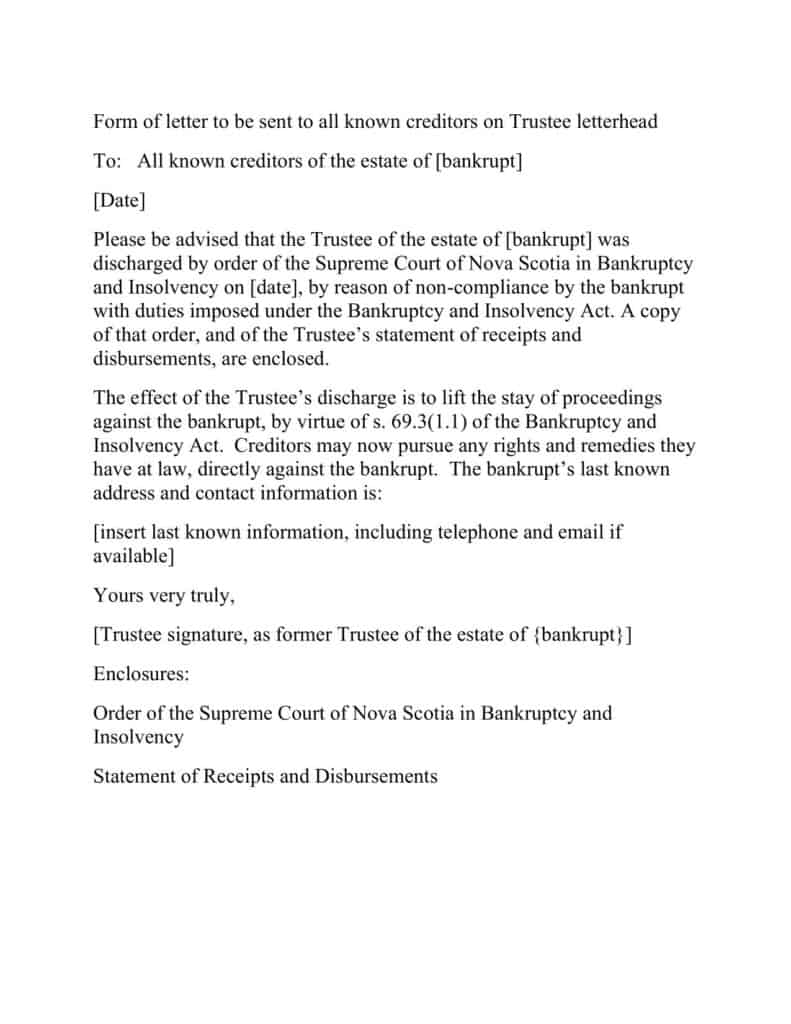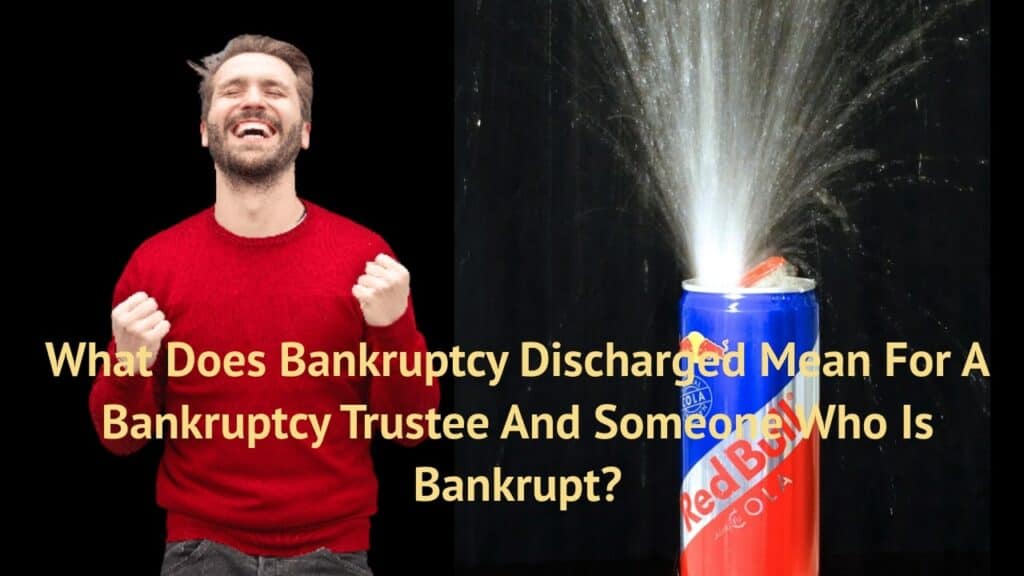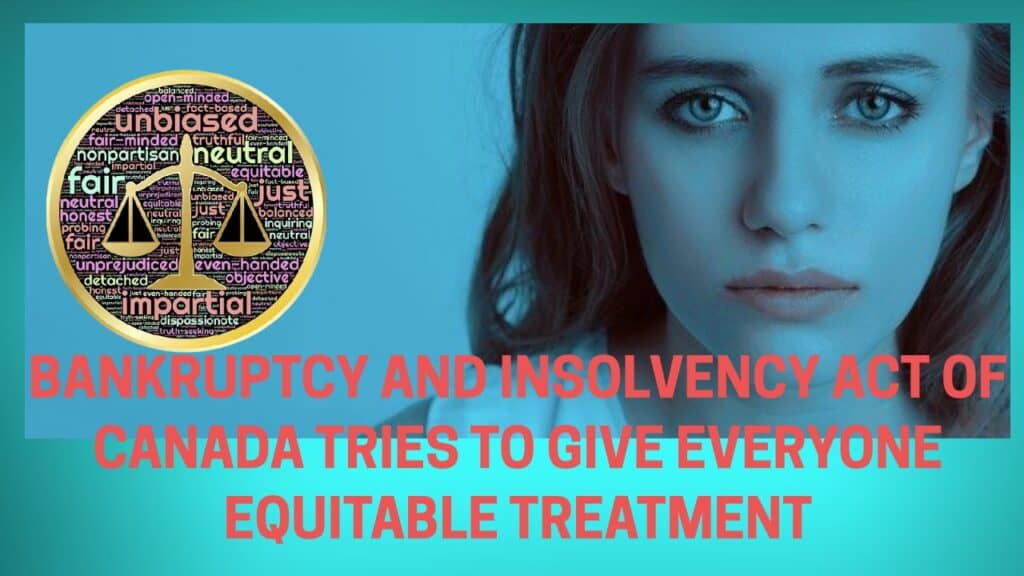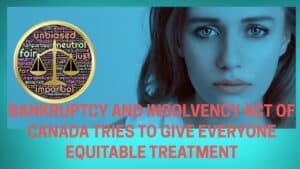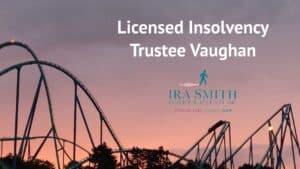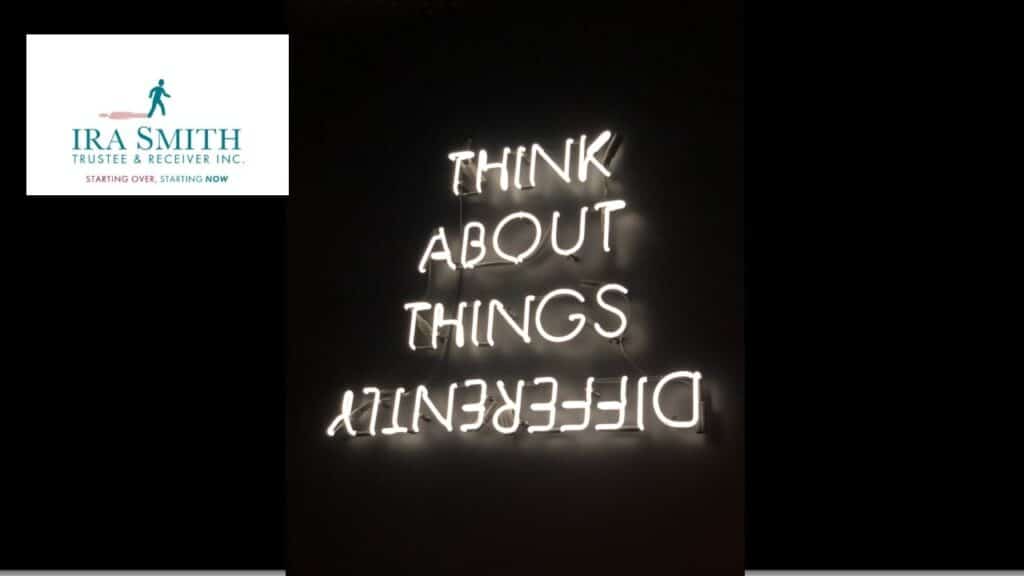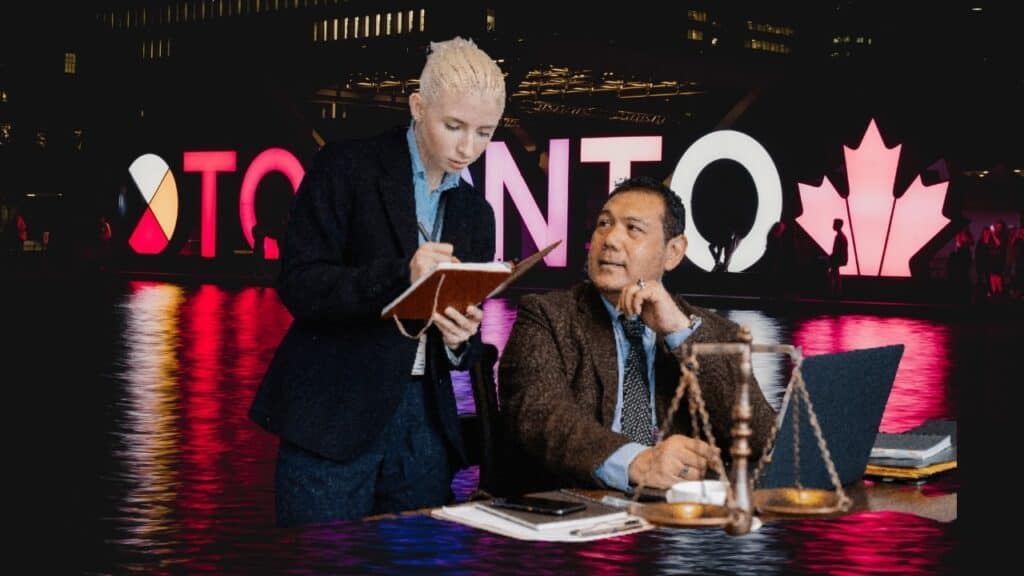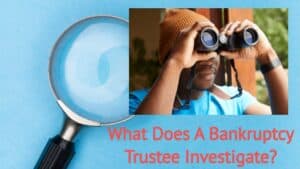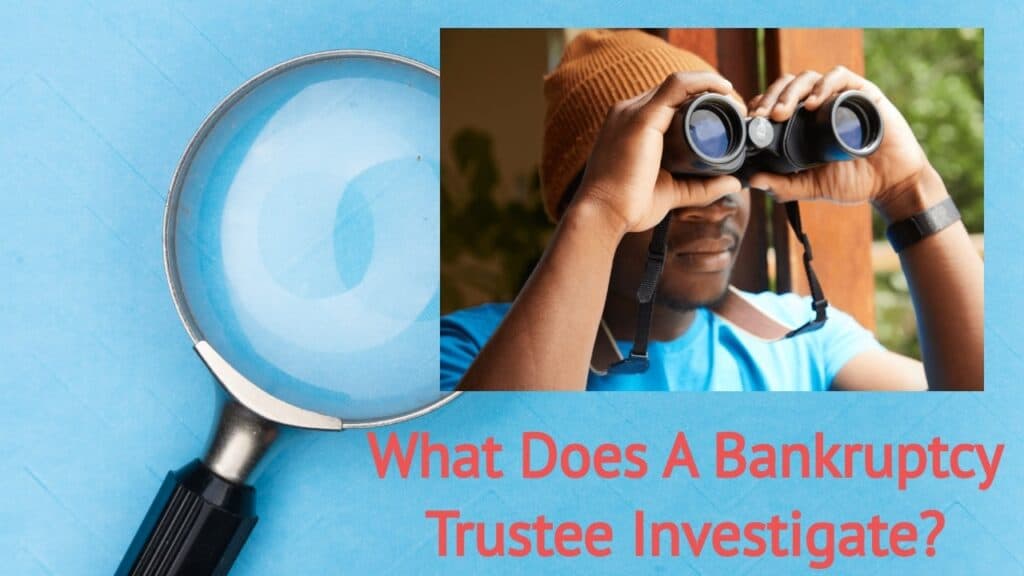Consumer proposal Toronto: What is a consumer proposal in Ontario?
If you’re drowning in debt and find you are falling further behind every month, there may be options available to help you regain total control over all aspects of your life and eliminate your stress. If you’re struggling with debt, a consumer proposal may be a good option for you. This guide will explain what they are, and the benefits, and answer some frequently asked questions. If you’re struggling with debt and live in the GTA, a consumer proposal Toronto may be a good option for you. This guide will explain what they are, and the benefits, and answer some frequently asked questions.
This debt settlement plan is a legal process administered under the Bankruptcy and Insolvency Act (Canada) (BIA). It allows you to pay back part of your debt over a period of time. The benefit to you of a consumer proposal Toronto is that once you finish paying back the portion that you agreed to, you will be totally debt-free.
Consumer proposal Toronto: Who can file a consumer proposal?
To qualify for this government-sanctioned debt settlement plan, you must be insolvent and owe $250,000 or less to all your creditors (excluding any secured creditor financial debts secured by registration against your personal residence such as mortgages or lines of credit).
This is a good option for people who:
- are employed
- can budget their money to make the required monthly payments
- want to avoid bankruptcy
- can’t stand all the collection calls from the collection agencies anymore

consumer proposal toronto
Consumer proposal Toronto: How to make a consumer proposal in Toronto
Under the BIA, a licensed insolvency trustee (formerly called a bankruptcy trustee) will administer the consumer proposal. In fact, the licensed insolvency trustee is called the consumer proposal administrator.
The licensed insolvency trustee will submit the required documents to the Office of the Superintendent of Bankruptcy (OSB). Your payment to unsecured creditors will stop as of the date of your filing. You will also have stopped paying any secured creditors if you have decided to do so because you could not afford to keep the secured assets and you, therefore, handed them over to the lenders.
When you file a consumer proposal Toronto, any legal action your unsecured creditors have started against you in the Greater Toronto Area will be stopped. If a creditor already has a judgment against you are issuing wage garnishees, that will also stop. This will give you some relief and the time to work out the debt settlement plan.
The licensed insolvency trustee will present your creditors with your proposal, a list of your assets and liabilities, as well as the reasons for your financial difficulties.
The creditors will have 45 days to decide whether to accept or reject the proposal. They can do this either before or at the meeting of creditors if one is held.
Consumer proposal Toronto: Why would my creditors be willing to agree?
To have a consumer proposal Toronto approved, a majority of your creditors by the dollar value of their unsecured debts, who have filed a proof of claim for their unsecured debts, need to authorize it. If creditors who have filed a proof of claim choose not to vote, that is considered a vote in favour.
Creditors who hold 25% or more of the total dollar amount of submitted claims may request a meeting, or the OSB may request one. If no meeting is requested, the proposal is considered accepted by the creditors.
There is not a whole lot to understand. As I mentioned, a simple majority by dollar value tells the tale. There is either a majority to accept or refuse your consumer proposal. Why would your unsecured creditors agree to your consumer proposal? Simple. The licensed insolvency trustee acting as the administrator in your consumer proposal has clearly shown them that it is a better deal than they will get in your bankruptcy.
If your proposal is accepted, then for the next 15 days, either the OSB or a creditor can ask to be put on the Court docket to seek Court approval. If no such demand is made, the proposal will be considered to have been approved by the Court.

If your consumer proposal Toronto is accepted
An accepted proposal is a legally binding agreement between you and your creditors. You have committed to making regular payments to the licensed insolvency trustee for a period of up to 60 months. You will fulfil your obligations under the proposal by making all the required payments on time.
If you attend two mandatory credit counselling courses run by the licensed insolvency trustee and make all the required payments, you will have discharged the balance of your debt. This also means you have successfully avoided bankruptcy as a consumer proposal Toronto is the best alternative to bankruptcy in Toronto.
Can you pay off a consumer proposal earlier than the specified timeframe?
A consumer proposal in Ontario is an interest-free loan that is much less than what you originally owed your unsecured creditors. So, it may be beneficial to you not to pay it off early to get the full benefit of the proposal.
However, we structure all of our proposals to give you flexibility. You can take the full 5 years if you need to. If you are able to pay it off early and you have good reasons for wanting to do so, then you can.
When we word it this way, we won’t have to go back to the creditors or the court to make any timeline changes. It’s all included. Also, with other loans, there’s usually a penalty for paying them off early. But with this loan, there’s no penalty for doing so.
If your consumer proposal Toronto is not accepted
If your proposal ends up being rejected, you have a few options:
- Try again with different, improved terms
- Look into other options for solving your financial issues
- File for bankruptcy
In other words, if you finish making all the payments and attend the two financial counselling sessions, you will have paid off your debt in full. Additionally, you will have avoided having to declare bankruptcy.

Consumer proposal Toronto: A consumer proposal will have an impact on your credit rating
A person who files this kind of proposal is typically given the lowest credit rating.
The information that affects your credit report is typically removed after a certain period of time. In Ontario, the notation of your consumer proposal insolvency proceeding stays on your credit record for 3 years after you have completed all of your payments and received your certificate of full performance.
Once you are done you can then start to rebuild your credit. One way to do so is by demonstrating that you can handle credit responsibly. This will involve making timely payments on your debts and maintaining a good credit history going forward. Over time, these positive steps will help to improve your credit score.
Consumer proposal Toronto: Are consumer proposals a good way to get out of debt?
You had financial difficulties and your assets and employment income were in jeopardy. Perhaps you even had wage garnishments. You needed debt solutions and you chose the only government-sanctioned debt settlement plan available in Canada. You were successful in completing it and as a result, you were able to shed all your debt in return for paying only a portion of it. You also avoided personal bankruptcy.
Without a doubt, that makes it worth it.

Consumer proposal Toronto: Benefits of filing a consumer proposal making it better than bankruptcy
There are several advantages to filing this kind of proposal, including:
- the elimination of all unsecured debt in return for paying only a fraction of what is owed;
- filers are able to keep their home, vehicle, and other assets as long as they can afford to make any mortgage payments or other loan payments against them;
- a successful consumer proposal will let you avoid bankruptcy;
- your proposal payments will be spread out over a longer period of time, making them more affordable.
Consumer proposal Toronto: Potential drawbacks of filing a consumer proposal
Some potential drawbacks to consider before filing a proposal include:
- you may not be able to borrow money for a few years after your proposal is completed;
- your credit score will be negatively affected but not as bad as someone who files for bankruptcy;
- if you cannot afford to keep up the debt payments on a secured loan, such as a car loan, you will have to give it up;
- the BIA says that your proposal must be a better alternative for your creditors than in a bankruptcy, so, working with the licensed insolvency trustee, you have to make an offer that will be approved by a majority of your creditors, and they may not agree to the first set of terms you propose.

consumer proposal toronto
CRA income tax debt can be included in consumer proposals
Definitely. CRA is an abbreviation for Canada Revenue Agency, whose purpose is to manage Canada’s revenue by collecting income taxes and other taxes owing by Canadians. CRA is the government department responsible for collecting income tax and GST/HST. CRA Canada tax debt refers to any outstanding tax debt owed to the Canadian government. If you have CRA tax debt, then you can eliminate it through a consumer proposal with a licensed consumer proposal administrator.
I have helped many people with CRA income tax debt. Examples are people who:
- were a Director of a company and became personally liable for unremitted HST
- filed their income tax returns and paid their income tax every year, but who are now faced with a large income tax reassessment that they cannot afford to pay
- did not keep up with their tax filings, and once caught up, realize that they have a huge debt they cannot afford to pay
For all these people, a consumer proposal Toronto was a better alternative for both them and their creditors than a bankruptcy. If you fall into one of these categories, then I can help you eliminate that debt.
Debt consolidation versus consumer proposals
You already know from this Brandon’s Blog what a consumer proposal in Toronto, Ontario is and can do for you.
A consolidation loan is financing that lets you consolidate numerous financial obligations and pay them off with one lower interest rate loan. This aids you to conserve cash because of the lower rate of interest. Your regular monthly payment on the one loan is now much more workable. To qualify, you’ll need to have a good credit score and demonstrate that you have the income and assets to repay the loan.
Financial debt consolidation can assist you to get your finances in order, however, a consumer proposal may be a much better option if you’re struggling with financial obligations.
What will happen if I am unable to make payments on my consumer proposal?
If you stick to the terms you agreed to, your creditors and collection agencies can’t hound you. If you break the terms of your proposal or miss 3 months of payments, the proposal becomes void. If that happens, you won’t be able to file another one.
This is another disadvantage of a consumer proposal. If it becomes annulled, the only thing left would be a bankruptcy filing.
Consumer proposal Toronto: What is the popularity of consumer proposals in Toronto?
Consumer proposals are the only government-approved debt repayment program. It has become quite popular in recent years. Consumer proposals are a great option for those who are struggling to meet their financial obligations and who want to eliminate their debt.
How popular are they? The OSB recently reported that across Canada, the proportion of proposals in consumer insolvencies increased to 70.2% of all consumer insolvency filings during the 12‑month period ending February 28, 2022. So consumer proposal Toronto filings and for the rest of Canada, represent the huge majority of consumer insolvency filings.
As I already stated, you can only do this if you are insolvent and your outstanding debts to creditors are less than the maximum allowed for a consumer proposal discussed above.

For those who owe more than the consumer proposal limit, we use another section of the BIA allowing them to restructure and eliminate debt.
What is the cost of a consumer proposal Toronto?
To see if this choice is best for you, you’ll need to weigh the costs. There are two different types of costs to take into account: 1. the amount you need to offer to get creditor approval; and 2. the professional fees that you will be responsible for.
During your free consultation with the licensed insolvency trustee, you will learn what your creditors could expect from your bankruptcy. As I have already said, the BIA requires your creditors to have a better outcome than they would in your bankruptcy. The licensed insolvency trustee will make the recommendation to you of what a successful debt settlement strategy would be.
The professional fee and disbursements that a licensed insolvency trustee is allowed for administering your proposal are fixed by the BIA regulations and are called a tariff. The tariff is the same whether you live in Toronto, Ontario or anywhere else in Canada. The proposal document reads that the licensed insolvency trustee is allowed to take its tariff from the total of the proposal fund that you will pay over time. As you have already read in this blog, what you need to offer your creditors is driven off of what they can expect from your bankruptcy. The cost of the proposal administration is not taken into account in that calculation.
In a successful consumer financial restructuring, the tariff is taken from the amount the creditors would otherwise receive. So your creditors are paying the cost, not you. Therefore, you do not pay anything for the professional fee and disbursements.
Consumer proposal Toronto: What happens after a consumer proposal?
After you have successfully completed your proposal, including the credit counselling sessions, you have hopefully learned proper budgeting skills. You are now better equipped to make wiser credit decisions and know that you cannot spend more than you earn, on an after-tax basis.
There are now ways for you to start rebuilding your credit:
- Get a secured credit card. You put down a cash deposit and that amount is your credit limit. When you pay your secured credit card debt balance in full each month and do not let the credit card company take it from your cash deposit, this will be reported to the credit reporting agencies. This improves your credit score over time.
- You can take out a small RRSP loan when you first get your certificate of full performance. You can then pay off the loan within the next 12 months. If you make your loan payments on time, it will be reported and this improves your credit score.
You don’t want to get into debt problems again. Be careful with credit.

Consumer proposal Toronto: How to avoid being ripped off
No one wants to be cheated, especially for something as important as picking from available debt management plans or debt-relief options, the best one for you for resolving your unmanageable debt problems. Here is what you can do to protect yourself from getting taken advantage of. Before making a decision on which debt settlement company to go with, be sure to do your research. This means reading online reviews and talking to people who have gone through a restructuring proposal, to get as much information as possible.
Keep in mind that there are a lot of debt settlement companies who will promise you that either they can eliminate your debt without using a BIA insolvency process or through a consumer proposal. They charge upfront fees. Check to see if such companies are actually licensed insolvency trustees. You can do so through the OSB website.
Anyone who charges an upfront fee is not a licensed insolvency trustee. As I said, an insolvency trustee like me provides a no-cost initial consultation. As I have also told you, in a successful restructuring, it is your creditors who pay the professional fee tariff. Remember, a licensed insolvency trustee is the only debt professional who is both licensed and supervised and is the only one able in Toronto or anywhere else in Canada to be the consumer proposal administrator.
For help with a consumer proposal Toronto, please contact us
I hope you found this consumer proposal Toronto Brandon’s Blog informative. Hopefully, you now see how a successfully completed proposal can eliminate their unsecured debt from their name. It is a legally binding agreement with your creditors that can only be filed through a licensed insolvency trustee.
We understand how stressed out and anxious you have become because you cannot fix your financial situation on your own. As a government-licensed insolvency professional firm, we can help you get your finances back on track.
Trustees, like we are, are the only government-licensed and accredited professionals who provide insolvency advice and debt relief solutions. A consumer proposal is a federal government-licensed debt settlement approach that can eliminate your debt. We can help you choose what is right for you.
If you’re struggling with money problems, call the Ira Smith Team today. We’ll work with you to develop a personalized plan to get you back on track and stress-free, all while avoiding the bankruptcy process if at all possible.
If you’re struggling with debt, the Ira Smith Team can help. We have the experience and knowledge to assist individuals and companies in restructuring their debt to prevent a bankruptcy legal proceeding. Everyone’s debt story is different. We offer a free debt assessment to help you identify the best solution for your personal debt issues. Call us today and get back on the path to a healthy stress-free life.





